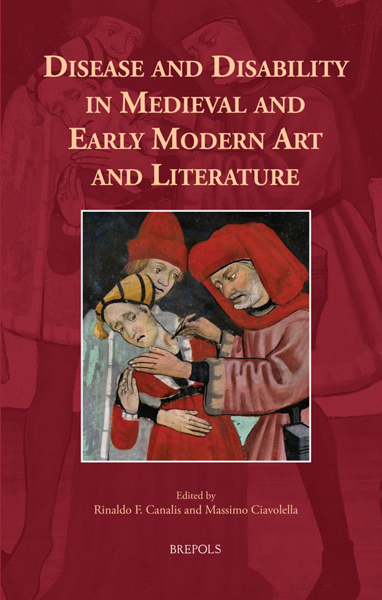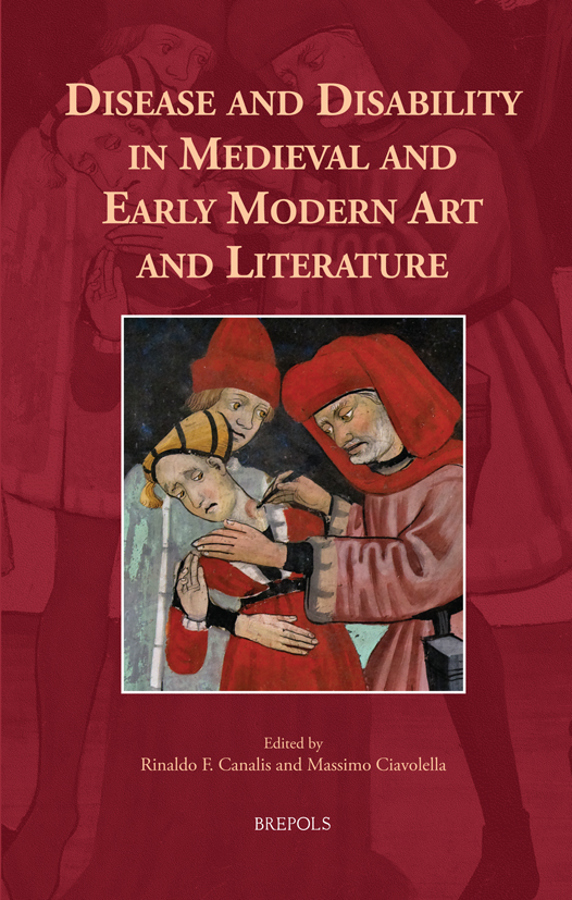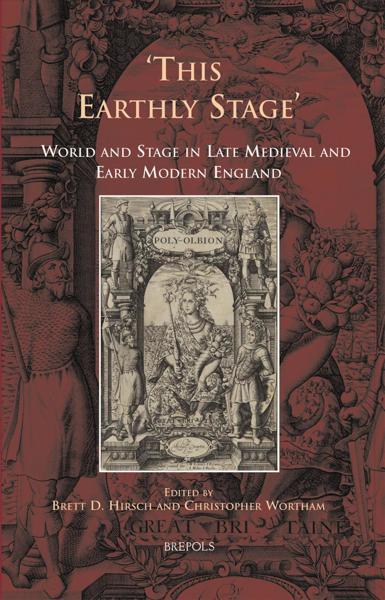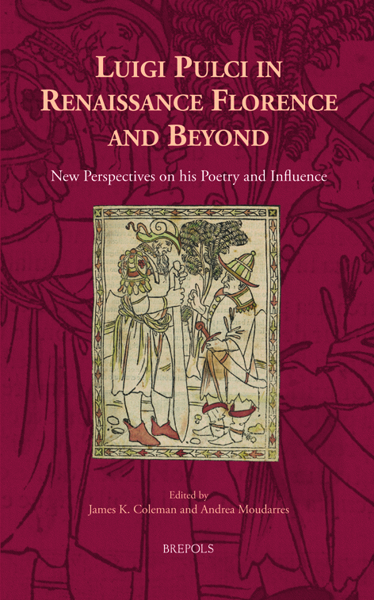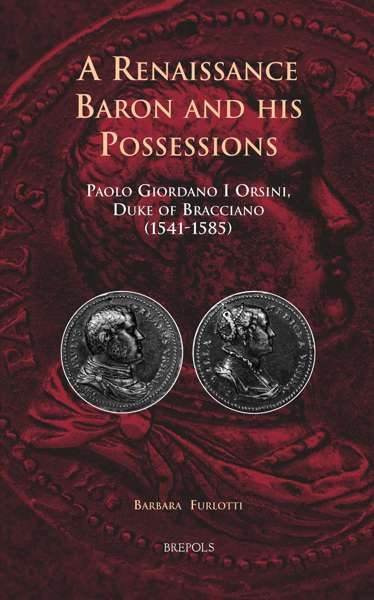
Disease and Disability in Medieval and Early Modern Art and Literature
Rinaldo Fernando Canalis, Massimo Ciavolella (eds)
- Pages: 379 p.
- Size:156 x 234 mm
- Illustrations:10 b/w, 100 col., 1 maps b/w
- Language(s):English
- Publication Year:2021
- € 100,00 EXCL. VAT RETAIL PRICE
- ISBN: 978-2-503-58870-4
- Hardback
- Available
- € 100,00 EXCL. VAT RETAIL PRICE
- ISBN: 978-2-503-58871-1
- E-book
- Available
Studies in the literary and artistic responses to disease and disability in the premodern era.
All the essays in the collection are cogently written and genuinely intriguing (…) That said, the collection is, for the most part, innovative and timely. It is innovative because it calls the necessity of periodization into question by placing medieval and early modern texts alongside one another and stressing that they were similarly interested in the issues of disease and disability at the time. The collection’s authors do address crucial differences between the two periods, but they also highlight the overlap between writers and artists of these eras in a compelling manner. Meanwhile, the collection is also quite timely in light of the global pandemic we are currently enduring. There has never been a better time to explore how creative minds viewed disease in the past because we are, arguably, positioned to understand them better than we have prior.” (Caitlin Mahaffy, in H-Net, June 2022)
“(…) the subsequent essays contained in the volume offer fresh insights and are more nuanced in their discussions of these centuries. They are well written, nicely illustrated with numerous color images, and indeed accessible to nonspecialists. They also offer much that will be of interest and use to academics in a wide range of fields, including medicine, disability, art, literature, history, architecture, and more.” (Kristy Wilson Bowers, in H-Net, July 2022)
"This collection of essays is a valuable volume, not least for the number of scholarly approaches that it encompasses, from scientific and medical to literary and artistic analyses. The number of images included as well as the range of sources both explored and cited are impressive and a useful resource for anyone working in this field or interested in the subject." (Kisha G. Tracy, in Speculum, 100/1, 2025, p. 224)
Rinaldo F. Canalis, MD FACS, is Emeritus Professor in the Department of Head and Neck Surgery (Otolaryngology) at the David Geffen School of Medicine at the University of California, Los Angeles, and Associated Faculty in the UCLA Center of Medieval and Renaissance Studies. He has written numerous articles on the history of Renaissance medicine and on the pathology of pre-Colombian peoples.
Massimo Ciavolella, PhD, taught for many years at Carleton University (Ottawa) and at the University of Toronto before coming to his present positions as Professor of Italian and Comparative Literature, Franklin D. Murphy Chair in Italian Renaissance Studies, and Director of the Center for Medieval and Renaissance Studies at the University of California, Los Angeles.
Humanity has always shown a keen interest in the pathological, ranging from a morbid fascination with ‘monsters’ and deformities to a genuine compassion for the ill and suffering. Medieval and early modern people were no exception, expressing their emotional response to disease in both literary works and, to a somewhat lesser extent, in the plastic arts. Consequently, it becomes necessary to ask what motivated writers and artists to choose an illness or a disability and its physical and social consequences as subjects of aesthetic or intellectual expression. Were these works the result of an intrusion in their intent to faithfully reproduce nature, or do they reflect an intentional contrast against the pre-modern portrayal of spiritual ideals and, later, through the influence of the classics, the rediscovered importance and beauty of the human body?
The essays contained in this volume address these questions, albeit not always directly but, rather, through an analysis of the societal reactions to the threats and challenges that essentially unopposed disease and physical impairment presented. They cover a wide range of responses, variable, of course, according to the period under scrutiny, its technological moment, and the usually fruitless attempts at treatment.
Acknowledgements
List of Illustrations
Introduction and Epidemiological Perspective
Rinaldo F. Canalis and Massimo Ciavolella
Part I. Medieval and Transitional Periods
The Art of Medicine in Byzantium: Disease and Disability in Byzantine Manuscripts
Alain Touwaide
Miracle and the Monstrous: Disability and Deviant Bodies in the Late Middle Ages
Jenni Kuuliala.
Leprosy, Melancholy, Folly and their Representations in French Medieval Literature
Gaia Gubini
Malady in Literary Texts from the Medieval and Early Modern Periods. Some Hypotheses on a Paradoxical Constellation
Joachim Küpper
Fevers, Botches and Carbuncles: Describing the Plague in Late Medieval and Early Modern Medical Treatises
Lori Jones
Part II. The Early Modern Period
The Role of Architecture and the Decorative Arts in Renaissance Medicine
Francis Wells
Art in Disease and Disease in Art: Reflections on Two Early Modern Paradigmatic Examples
Manuela Gallerani.
The Mal Franzoso: Between Art, History and Literature: Paracelso and Della Porta
Alfonso Paolella
The Ailing Artist
Roberto Fedi
Nicolas Poussin`s The Plague at Ashdod and the French Disease
Efrain Kristal
‘Yet have I in me something dangerous’: On the Interplay of Medicine and Maleficence in Shakespeare’s Hamlet
Sara Frances Burdorff
Textures of Lesions – Textures of Prints
Domenico Bertoloni Meli
Index
